As an avid skater and equipment enthusiast, I’ve seen firsthand how proper use of skate guards can extend the life of your blades and improve your overall skating experience. Whether you’re a competitive figure skater, a weekend hockey player, or just enjoy the occasional spin around the rink, understanding the importance of skate guards is essential for anyone who laces up a pair of skates.
The Anatomy of Ice Skate Guards
At first glance, skate guards might seem simple, but there’s more to these protective accessories than meets the eye. Let’s break down the key components and types of skate guards you’ll encounter.
Hard Guards vs. Soft Soakers
Skate guards generally fall into two main categories: hard guards and soft soakers. Hard guards, typically made of plastic or rubber, are designed for walking off the ice.
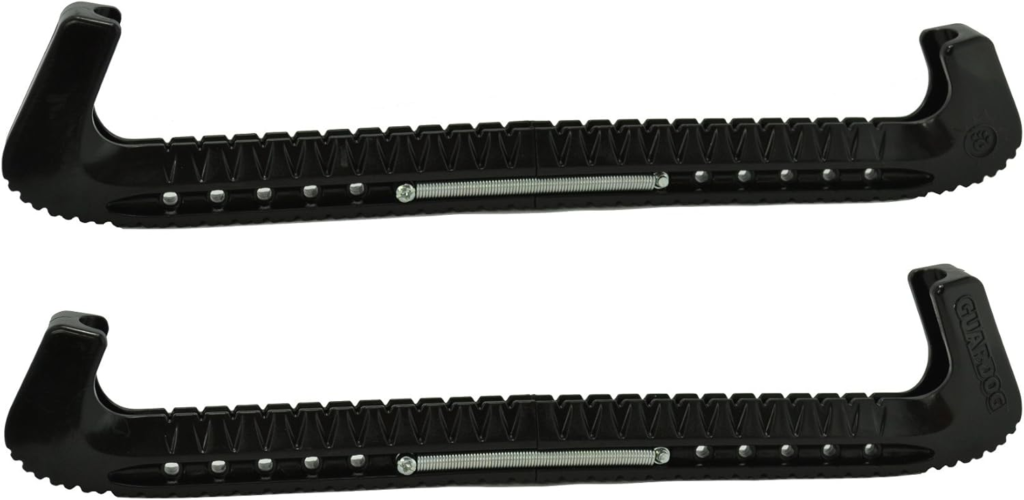
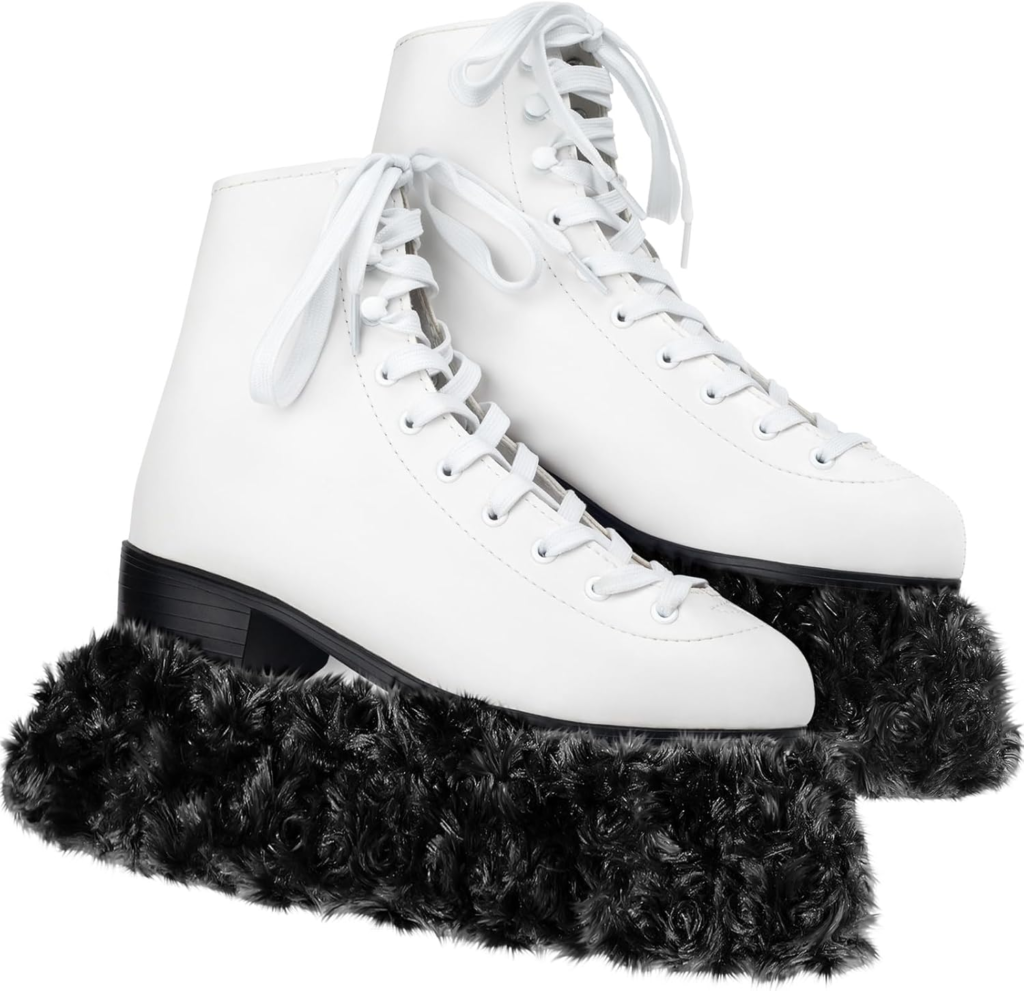
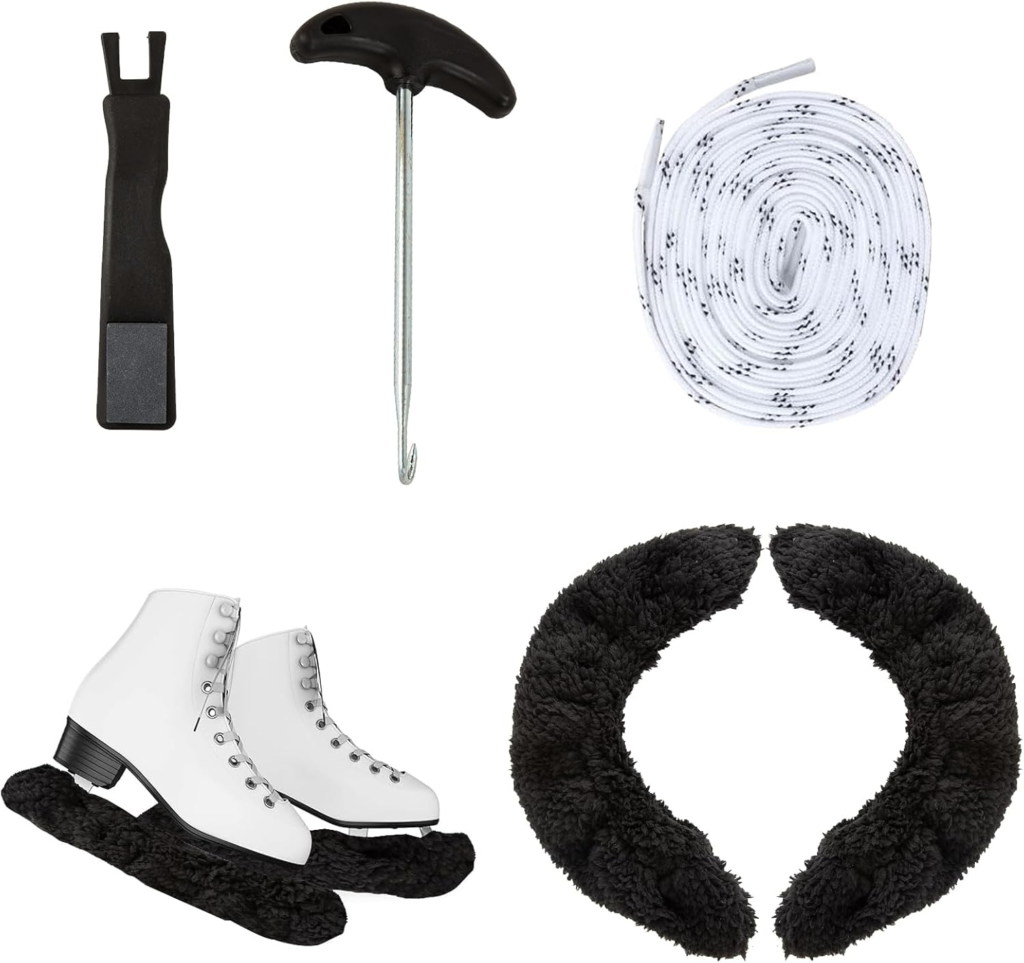
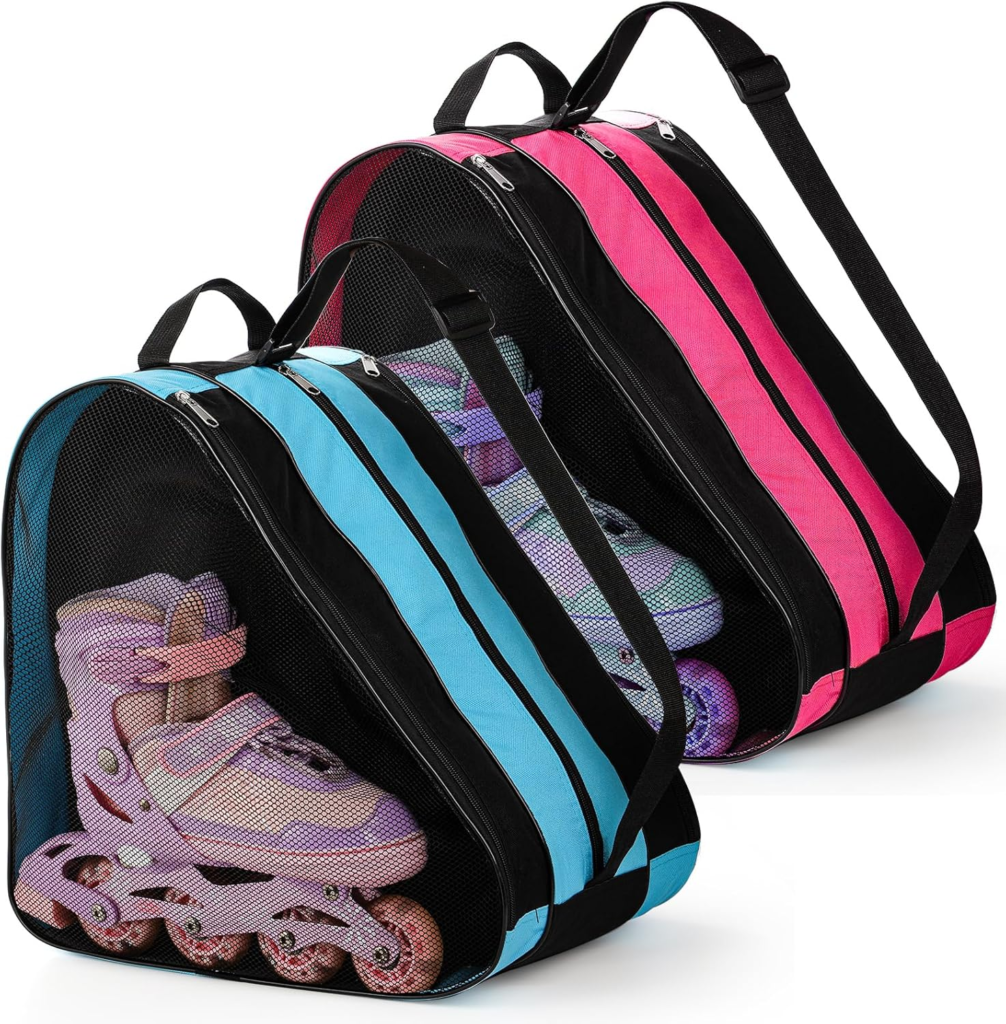
They protect your blades from dulling or chipping when you’re navigating locker rooms or parking lots.
Soft soakers, on the other hand, are made of absorbent materials like terrycloth and are used for storage. They wick away moisture to prevent rust and corrosion.
The choice between hard guards and soft soakers depends on your immediate needs – protection while walking or moisture absorption during storage.
Materials Matter
The materials used in skate guards can significantly impact their effectiveness. High-quality synthetic rubbers offer excellent durability and grip, while advanced plastics provide lightweight protection.
Some manufacturers are even experimenting with eco-friendly materials to address environmental concerns.
For hard guards, look for materials that can withstand repeated impact and abrasion. Thermoplastic rubber (TPR) is a popular choice because of it’s durability and flexibility.
For soft soakers, microfiber and bamboo fabrics are gaining popularity for their superior moisture-wicking properties and antimicrobial qualities.
Universal Fit vs. Custom Molded
While many guards are designed to fit a range of skate sizes, custom-molded options are available for those seeking a perfect fit. Universal guards are convenient and cost-effective, but custom guards can provide superior protection and alignment for serious skaters.
Universal guards typically feature adjustable straps or elastic bands to accommodate different blade lengths and profiles. They’re a great option for recreational skaters or those with growing feet.
Custom-molded guards, often used by professional skaters, are created using a cast of your specific blade.
This confirms a snug fit and optimal protection, but comes at a higher cost.
The Science of Blade Protection
Understanding the science behind blade protection can help you appreciate the importance of proper guard use. Skate blades are precision instruments, and even minor damage can affect your performance on the ice.
Edge Preservation
The edges of your skate blades are crucial for control and maneuverability. Hard guards protect these edges from nicks and chips that can occur when walking on hard surfaces.
By maintaining sharp, clean edges, you’ll enjoy better performance and require less frequent sharpening.
Skate blades have two edges – inside and outside – which are used for different maneuvers on the ice. These edges are created by a small hollow ground into the blade during sharpening.
Even a small nick in the edge can significantly impact your ability to grip the ice, affecting your speed, turns, and stops.
Rust Prevention
Moisture is the enemy of steel blades. Soft soakers play a vital role in absorbing moisture after use, preventing rust and corrosion.
This is particularly important if you live in a humid climate or often skate outdoors.
When water sits on the surface of your blades, it can lead to oxidation, which weakens the metal and can cause pitting. Over time, this can compromise the structural integrity of your blades.
Soft soakers made from moisture-wicking materials help draw water away from the blade surface, allowing it to evaporate safely.
Alignment and Pressure Distribution
Well-designed guards distribute pressure evenly across the blade, helping to maintain proper alignment. This is especially important for figure skaters, where blade alignment can significantly impact jumps and spins.
Skate blades are mounted to the boot with precision, often to within fractions of a millimeter. Uneven pressure from poorly fitting guards can gradually shift this alignment, leading to decreased performance and potential injury.
Quality guards are designed to cradle the blade evenly, preserving it’s carefully calibrated position.
Implementing a Skate Guard Routine
Now that we understand the importance of skate guards, let’s walk through a step-by-step routine for proper use and maintenance.
Post-Skate Care
Immediately after skating, wipe down your blades with a clean, dry cloth to remove any ice or moisture. This initial step is crucial in preventing rust and ensuring your guards can do their job effectively.
Pay special attention to the area around the toe pick (for figure skates) and the heel, where water tends to accumulate.
Guard Application
If you need to walk off the ice, apply your hard guards. Ensure they’re securely attached and cover the entire blade.
Start by aligning the guard with the toe of your blade and slide it on, making sure it fits snugly.
Double-check that the guard is fully seated and won’t slip off as you walk.
Transition to Soakers
Once you’re ready to store your skates, remove the hard guards and apply soft soakers. Make sure the soakers are clean and dry.
Gently slide the soaker over the blade, ensuring it covers the entire length.
If your soakers have a fastening mechanism, secure it to prevent them from slipping off during storage.
Storage
Store your skates in a well-ventilated area, preferably in a breathable skate bag. Avoid leaving them in damp or humid environments, which can promote rust even with soakers on.
If possible, store your skates with the blades facing up to allow any residual moisture to drain away from the steel.
Regular Inspection
Check your guards for wear and tear regularly. Replace them if you notice any damage or degradation.
Look for signs of cracking, tearing, or compression in hard guards.
For soakers, check for thinning fabric, loose stitching, or a decrease in absorbency. A good rule of thumb is to replace your guards at least once a season, or more often if you skate often.
Common Pitfalls and How to Avoid Them
Even experienced skaters can fall into bad habits when it comes to skate guard use. Here are some common mistakes and how to avoid them:
Forgetting to Remove Guards
One of the most dangerous mistakes is forgetting to remove your hard guards before stepping onto the ice. This can lead to serious falls and injuries.
Create a pre-skate ritual that includes guard removal to make it a habit.
Some skaters place their guards in a specific, visible spot as a reminder. Others attach a brightly colored tag to their laces that they move when they remove their guards.
Leaving Guards On Too Long
Keeping hard guards on for extended periods can trap moisture against the blade, leading to rust. Remove guards as soon as you’re off the ice and in a safe area.
If you’re traveling to and from the rink with your skates, consider using a skate bag with built-in blade protection, allowing you to remove the guards but still keep your blades safe.
Neglecting Soaker Maintenance
Dirty or damp soakers can do more harm than good. Wash your soakers regularly and confirm they’re completely dry before use.
Establish a routine of washing your soakers after every few uses, or more often if you skate daily.
Some skaters keep many pairs of soakers, allowing them to rotate and confirm they always have a clean, dry pair available.
Using I’ll-Fitting Guards
Guards that are too loose or too tight can damage your blades or fall off at inopportune moments. Invest in properly sized guards or consider custom options if you’re serious about your skating.
When purchasing new guards, bring your skates to confirm a proper fit.
For growing skaters, check the fit of your guards regularly and replace them as needed.
Adapting Guard Use to Different Skating Disciplines
Different types of skating require different approaches to guard use. Here’s how to adapt your guard routine based on your discipline:
Figure Skating
Figure skaters often need quick guard changes between practice sessions. Consider using slip-on guards for easy application and removal.
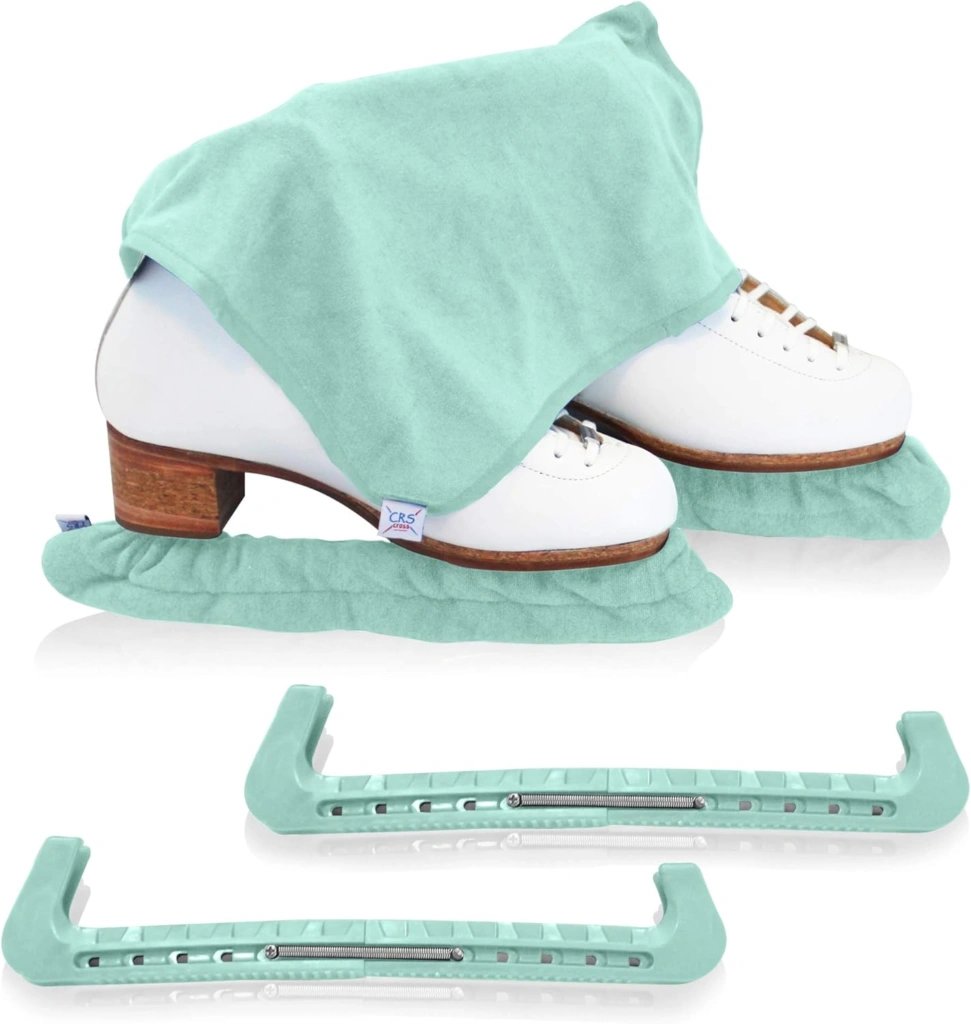
Pay extra attention to toe pick protection, as this area is crucial for jumps and spins.
The precision required in figure skating means blade alignment is paramount. Choose guards that provide even pressure distribution along the entire blade.
Some figure skaters use different guards for competition days versus practice sessions, opting for more protective options during travel and lighter, easier-to-remove guards for quick changes at competitions.
Hockey
Hockey players should look for durable guards that can withstand the rough and tumble of locker rooms. Consider guards with antimicrobial properties to combat odor-causing bacteria.
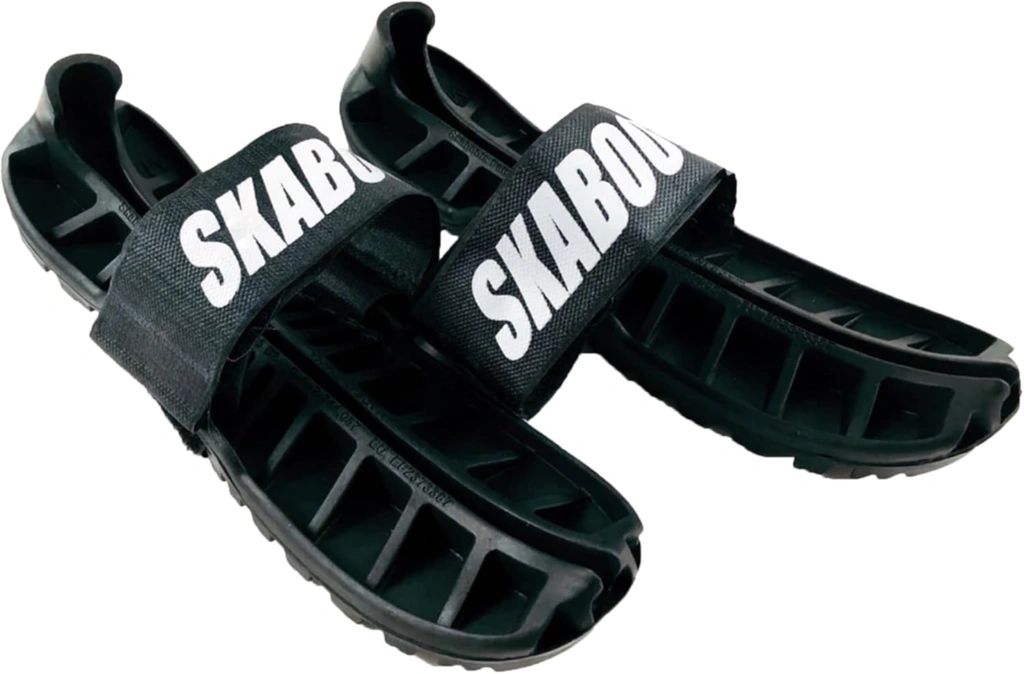
Hockey skate guards often feature a more rugged design to protect against the inevitable bumps and scrapes that occur in a busy locker room.
Given the fast-paced nature of hockey, quick application and removal of guards is essential. Many hockey players prefer guards with a simple, secure closure system that can be operated with gloved hands.
Some guards are designed to clip onto equipment bags when not in use, reducing the risk of loss or misplacement.
Speed Skating
Speed skaters require specialized guards that accommodate their unique blade shape. Look for guards designed specifically for speed skates to confirm proper protection.
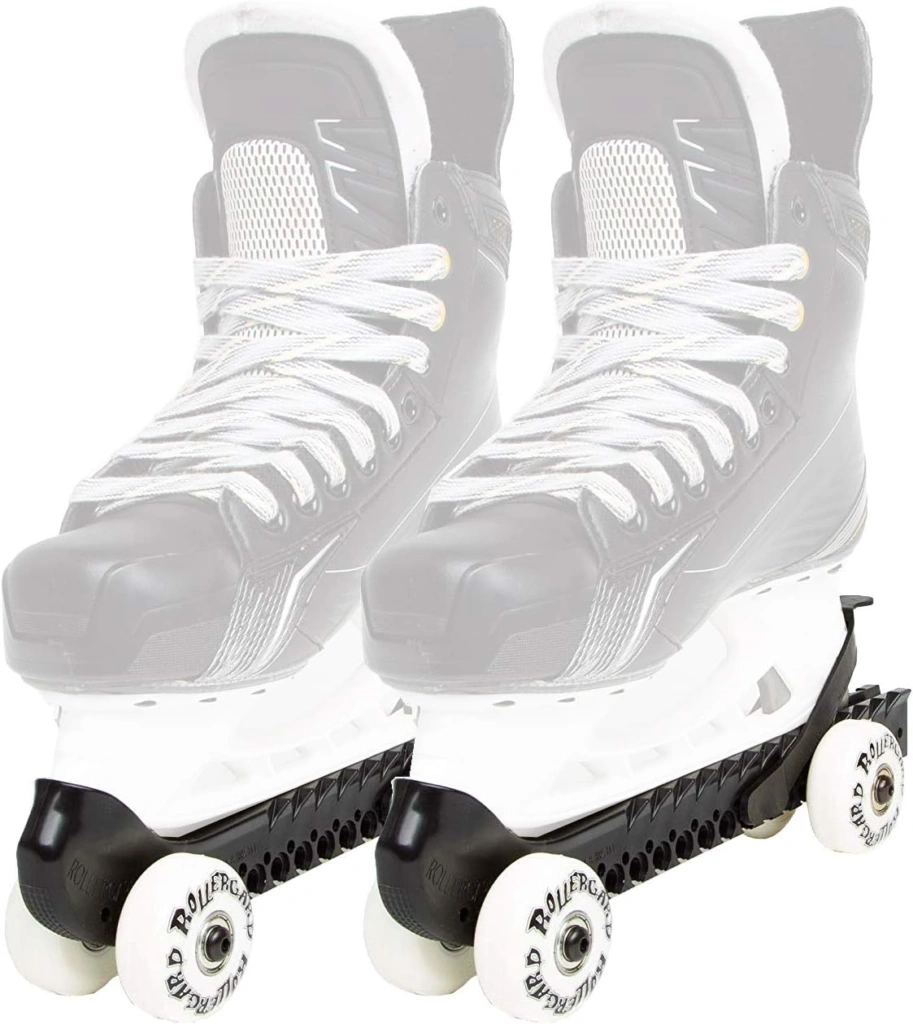
The long blades used in speed skating need guards that provide full-length coverage while still allowing for easy application and removal.
Some speed skaters use guards with built-in blade stabilizers to maintain perfect alignment during transport. Given the precision required in speed skating, many athletes opt for custom-molded guards that perfectly match their blade profile.
Advanced Guard Technologies
As skating technology evolves, so do skate guards. Here are some cutting-edge developments to watch:
Smart Guards
Some companies are developing “smart” guards with built-in sensors that watch blade sharpness and alignment. These can help you improve your maintenance schedule and enhance performance.
These high-tech guards can connect to smartphone apps, providing real-time data on blade condition and even suggesting when it’s time for a resharpening.
Some smart guards incorporate temperature sensors to alert skaters when their blades have fully cooled after use, indicating the optimal time to apply soakers. This technology helps prevent premature rusting caused by trapping heat and moisture against the blade.
Thermoregulating Materials
New materials that help regulate blade temperature are being incorporated into some guard designs. These can help prevent condensation and reduce the risk of rust.
Some guards use phase-change materials that absorb excess heat from the blade and release it slowly, maintaining a more consistent temperature.
Other designs incorporate ventilation channels that promote airflow around the blade, accelerating the cooling process while still providing protection. This is particularly useful for skaters who often transition between on-ice and off-ice environments.
Customization Options
3D printing technology is making it possible to create fully customized guards tailored to person skaters’ needs and preferences. This allows for perfect fit and alignment, as well as the incorporation of personal design elements.
Some manufacturers offer online platforms where skaters can input their blade specifications and design preferences, resulting in a one-of-a-kind guard. This level of customization confirms optimal protection and can even include features like built-in blade angle indicators for figure skaters.
Exercises to Reinforce Proper Guard Use
To help make proper guard use second nature, try these exercises:
Timed Guard Application
Practice putting on and removing your guards quickly and safely. Time yourself to improve efficiency.
Start by setting a baseline time for both application and removal.
Then, work on shaving off seconds while maintaining proper technique. This skill can be particularly useful in competition settings where quick transitions are necessary.
Blind Guard Check
With your eyes closed, feel your guards to check for proper placement and security. This will help you develop a tactile sense for correct guard use.
Practice this regularly to build muscle memory, allowing you to confidently check your guards even when distracted or in low-light conditions.
Guard Inspection Challenge
Set a weekly reminder to thoroughly inspect your guards for wear and tear. Make it a habit to look for signs of damage or degradation.
Create a checklist of specific areas to examine, such as the closure mechanism, the interior padding, and the overall shape of the guard.
By turning this into a regular challenge, you’ll be more likely to catch potential issues before they become problems.
People Also Asked
What are the best materials for ice skate guards?
The best materials for ice skate guards depend on their intended use. For hard guards, high-quality plastics like polypropylene or durable rubbers such as thermoplastic rubber (TPR) offer excellent protection.
For soft soakers, moisture-wicking fabrics like microfiber or bamboo blends are highly effective.
How often should I replace my skate guards?
Skate guards should be replaced at least once per season, or more often if you skate often. Signs that it’s time for replacement include visible wear, cracks, or a loose fit.
For soft soakers, replace them when they lose their absorbency or show signs of thinning.
Can I use the same guards for figure skates and hockey skates?
While some universal guards can fit both types of skates, it’s generally better to use guards specifically designed for your skate type. Figure skates require guards that accommodate the toe pick, while hockey skate guards are designed for a straighter blade profile.
Do professional skaters use custom skate guards?
Many professional skaters do use custom skate guards, especially for competition and travel. Custom guards offer a perfect fit, which can be crucial for maintaining blade alignment and providing optimal protection.
How do I clean my skate guards?
Hard guards can be cleaned with mild soap and water, then dried thoroughly. Soft soakers should be machine washed in cold water and air-dried. Avoid using harsh chemicals or high heat, which can damage the materials.
Are there skate guards that can help prevent rust?
Yes, some skate guards are designed with rust prevention in mind. Look for soakers made from highly absorbent materials with antimicrobial properties.
Some hard guards also feature ventilation systems to promote air circulation and reduce moisture buildup.
What’s the difference between walking guards and soakers?
Walking guards (hard guards) are designed to protect blades when walking off-ice, while soakers are soft, absorbent covers used for moisture protection during storage. Walking guards are typically made of hard plastic or rubber, while soakers are made of fabric.
Can leaving guards on too long damage my skates?
Yes, leaving hard guards on for extended periods can trap moisture against the blade, potentially leading to rust. It’s best to remove hard guards as soon as you’re off the ice and switch to soft soakers for storage.
Are there eco-friendly options for skate guards?
Some manufacturers are developing eco-friendly skate guards made from recycled materials or biodegradable plastics. These options are becoming more widely available as environmental concerns grow in the skating community.
How do smart skate guards work?
Smart skate guards typically incorporate sensors that watch factors like blade sharpness, alignment, and temperature. They often connect to smartphone apps to provide real-time data and maintenance recommendations to skaters.
Key Takeaways
- Use hard guards for walking and soft soakers for storage to maximize blade protection.
- Implement a consistent post-skate care routine to prevent rust and maintain blade quality.
- Choose guards appropriate for your skating discipline and skill level.
- Regularly inspect and maintain your guards to confirm they’re providing optimal protection.
- Stay informed about new guard technologies that could enhance your blade care routine.
Affiliate Disclaimer: SkateNavigator.com may include affiliate links, which allow us to earn a small commission when you make a purchase through them. This helps support our site at no extra cost to you. Thank you for your support!
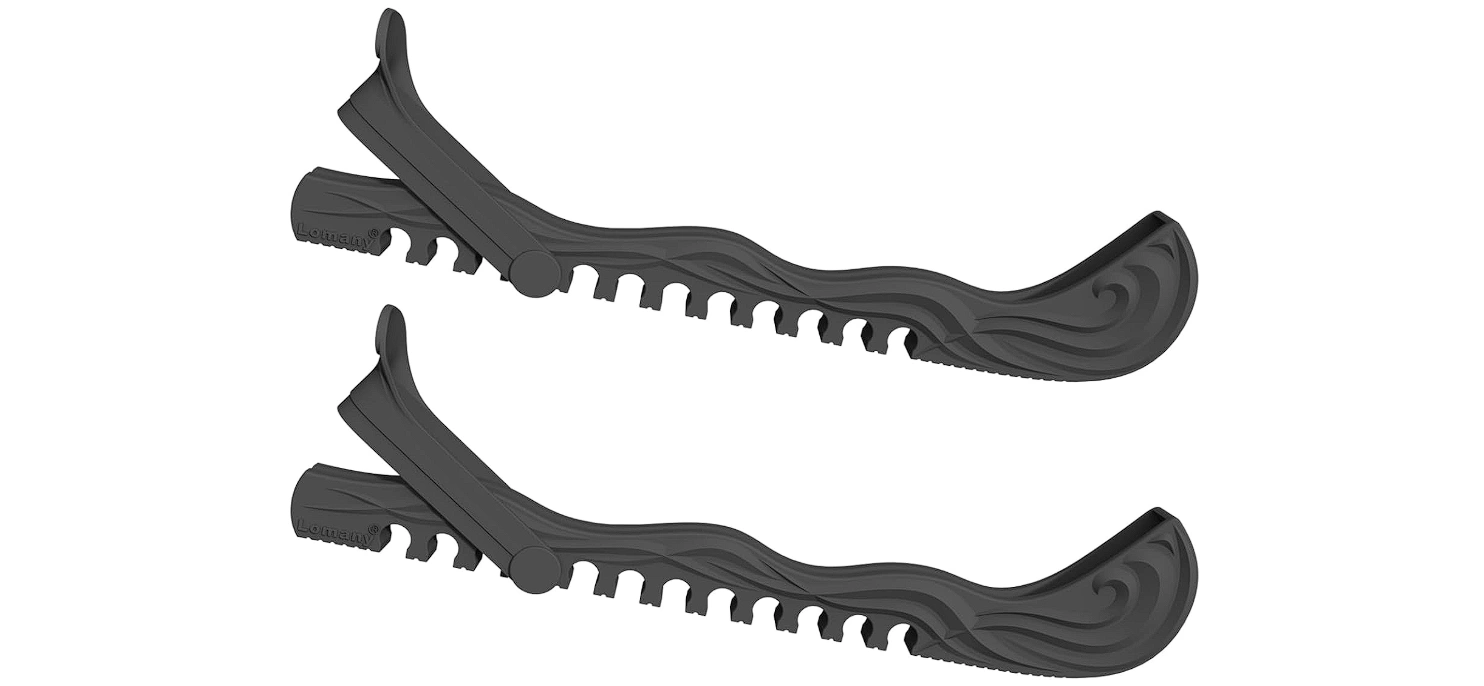

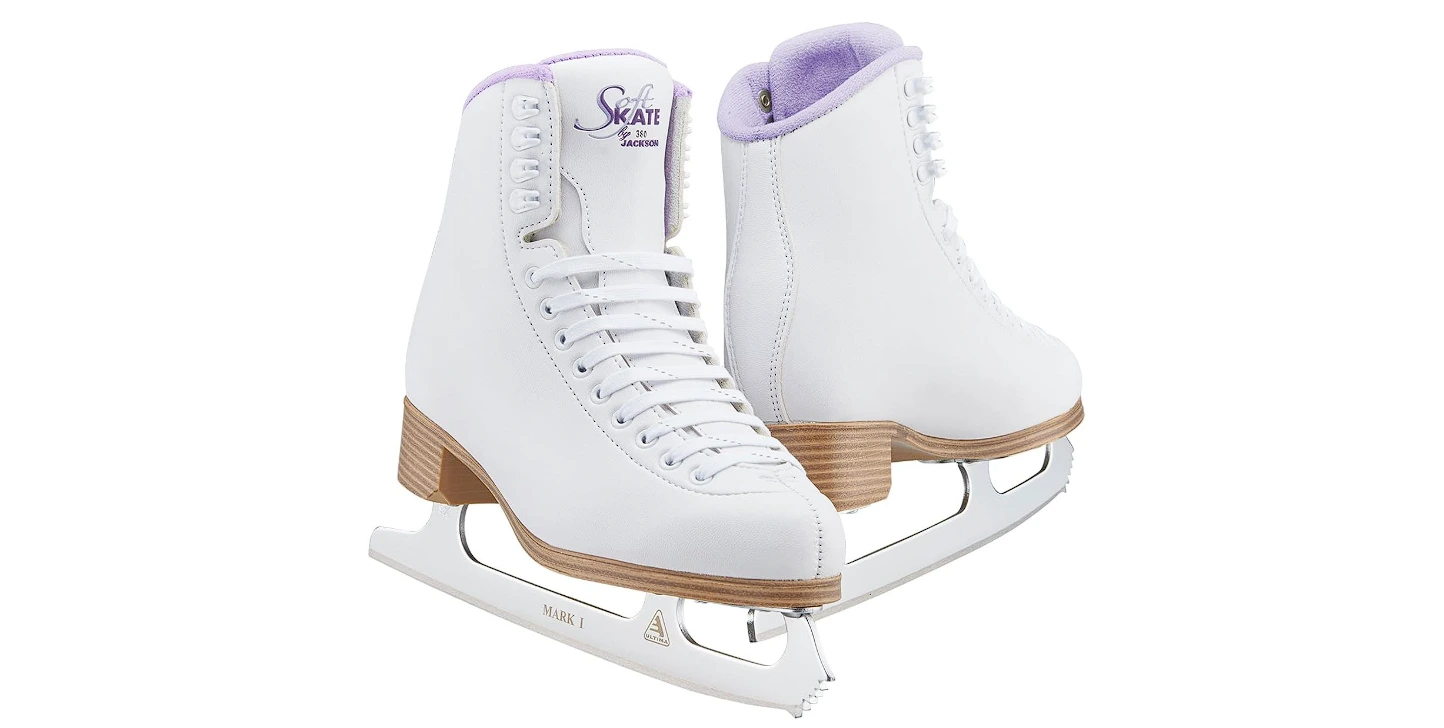
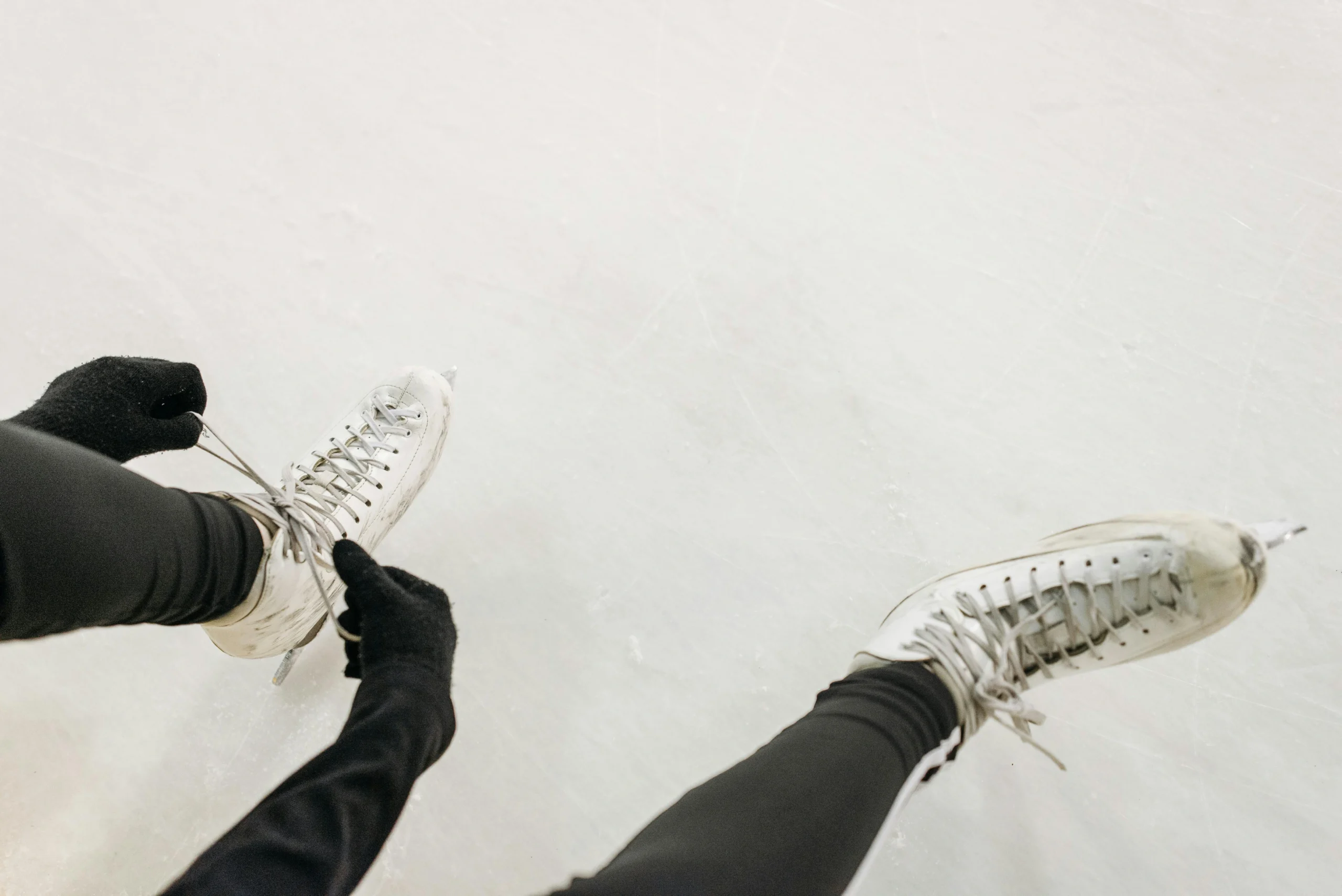
0 Comments